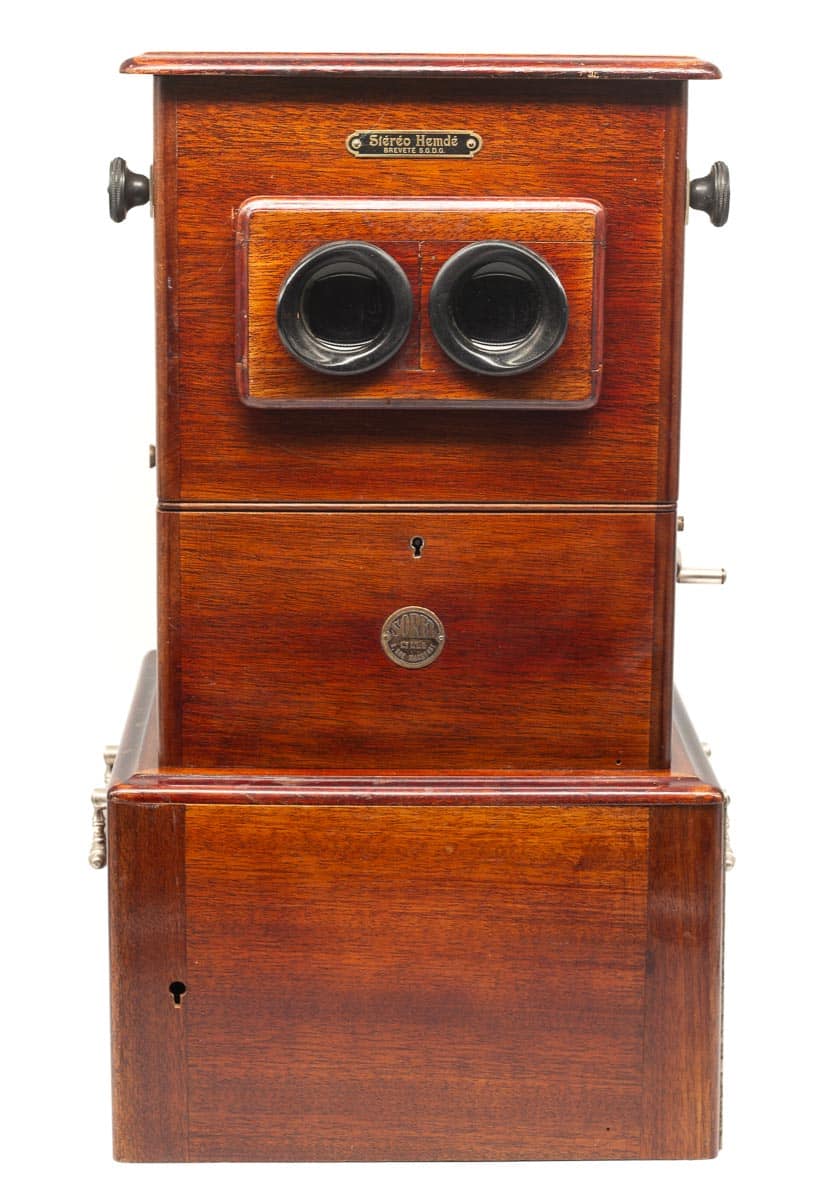
The Hemdé Série II stereoscope was introduced to support 6 x 13 cm glass stereoviews and larger formats. Read more about the different Hemdé series here. The nameplate with the address 9, Rue Macquart indicates that this stereoscope is manufactured after the death of Paul Sorel. An interesting feature is that the top part, with the mechanism and lenses, can easily be removed from the cabinet. Four small slides on the inside of the cabinet can be turned so that the top part can be removed.
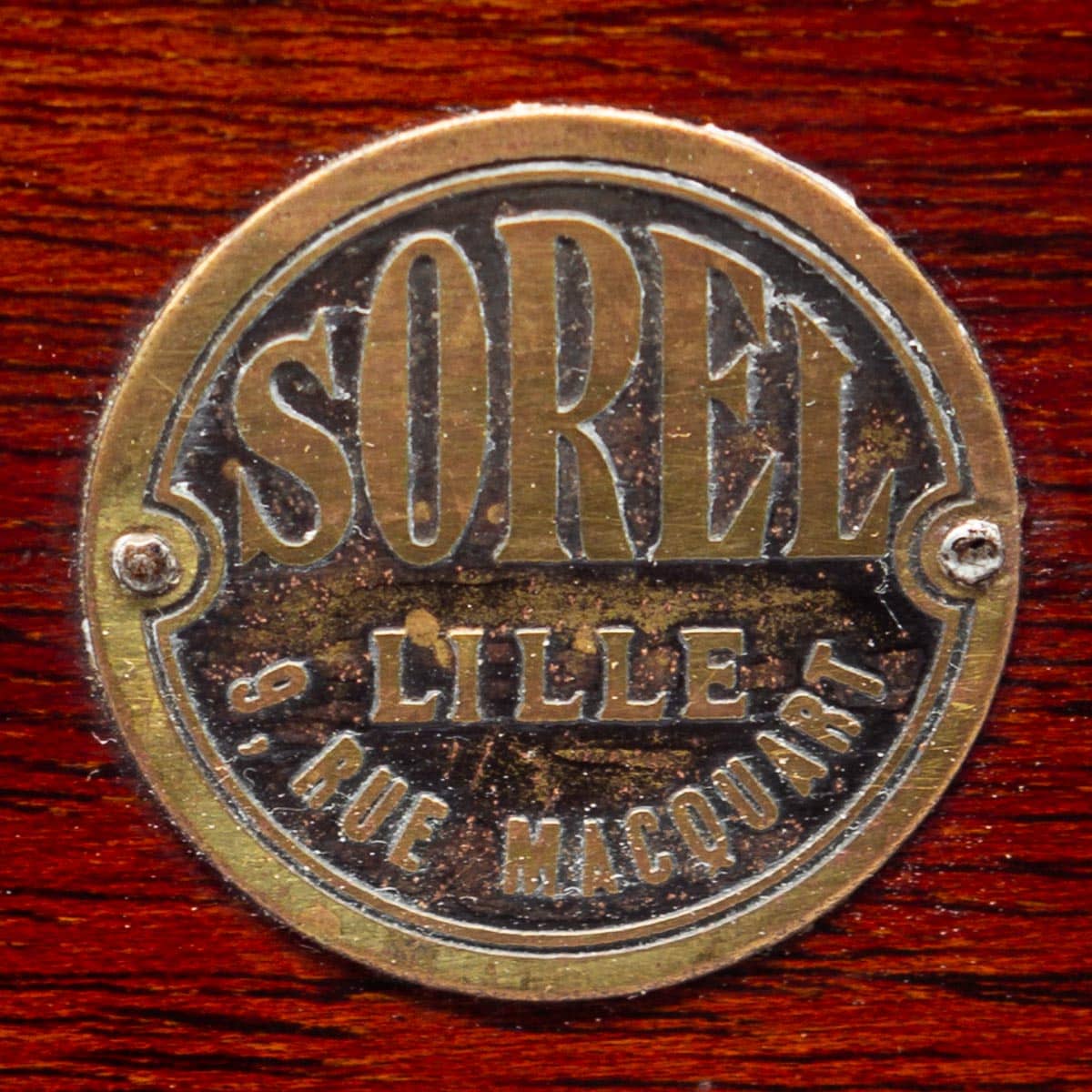
Specifications
| Manufacturer: | Hemdé |
| Year of introduction: | 1907 |
| Year of manufacture: | 1913–1914 |
| Type: | Tabletop |
| Viewer: | Multi-view |
| Mechanism: | Tray-based |
| Bidirectional navigation: | Yes |
| Serial number: | None |
| Stereoview support: | Glass |
| Stereoview format: | 6 x 13 cm |
| Number of slides: | 25 |
| Lens focussing: | Yes |
| Inter-ocular adjustment: | No |
| Eyepiece blinders: | No |
| Dimensions (L x W x H): | 29 x 29.5 x 40 cm |
| Construction: | Mahogany |
| Other features: | Two plates with Stéréo Hemdé and Sorel – Lille – 9, Rue Macquart. |
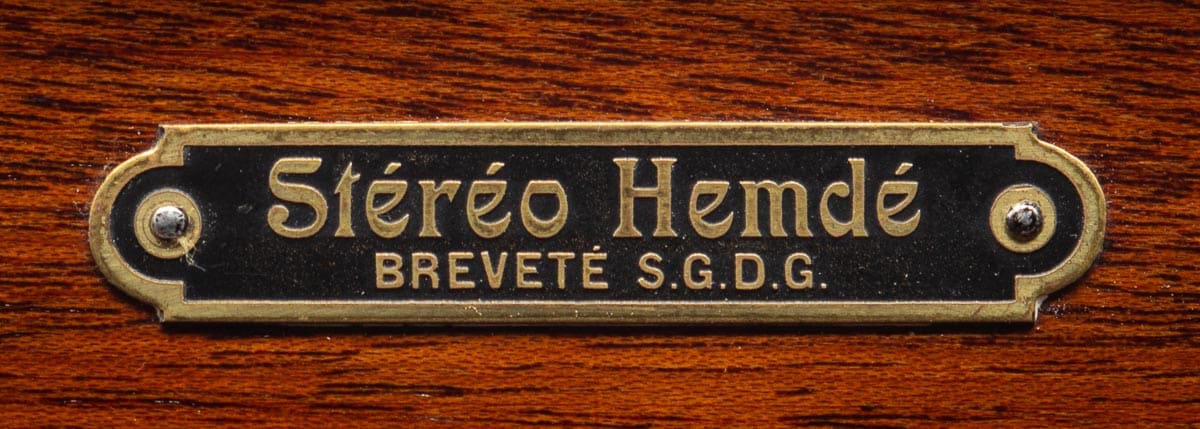
Autochrome with a Hemdé Série II
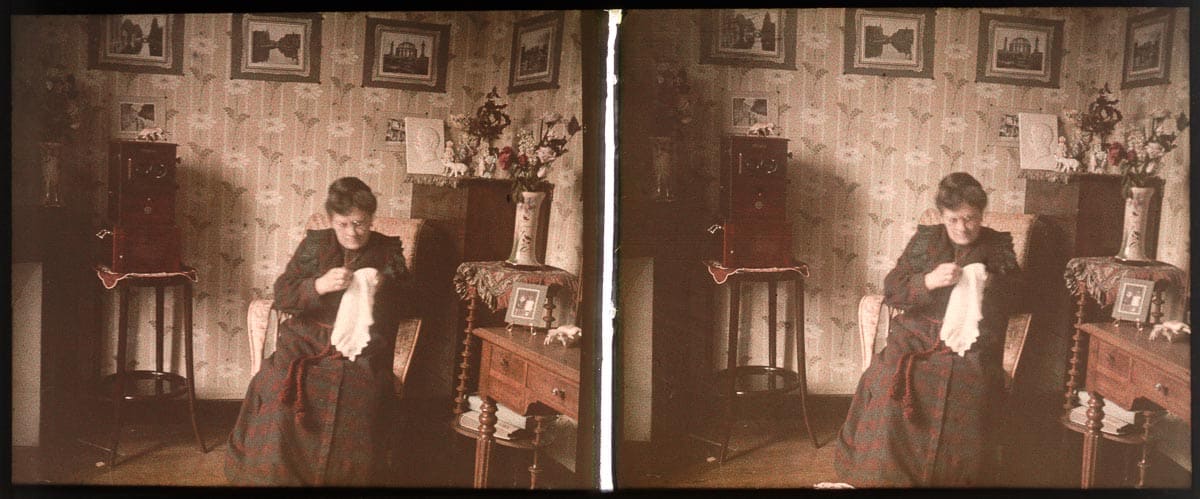
A 6 x 13 cm autochrome stereoview of a woman with a Hemdé Série II stereoscope on her right. The image below shows the invoice from 10 April 1913 of the stereoscope that is visible on the autochrome. The invoice mentions the stereoscope’s serial number 247, and also includes the purchase of 13 slide trays (including 10 slides for autochromes).
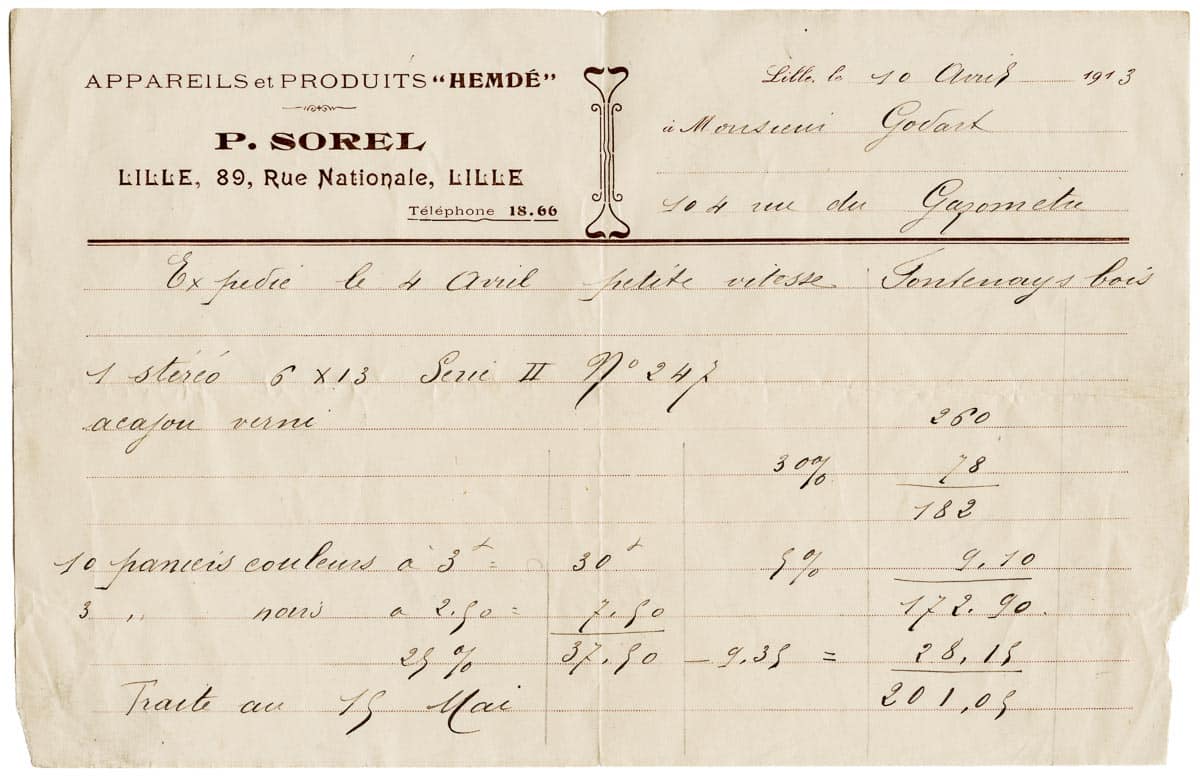
Glossary: autochrome / inter-ocular adjustment / multi-view / tabletop / tray-based
Hemdé
Hemdé was a trademark for photography accessories and stereoscopes. The name was composed of the company’s location in Hem, near Lille in northern France, and letters from the surname of the founder, Maurice Delécaille. Delécaille patented a design for a stereoscope mechanism in 1907, together with Émile Cuny and Paul Sorel. Sorel became the second director of Delécaille’s company, which was renamed to Societé Delécaille et Sorel. Sorel continued the company alone from 1910, and moved from Hem to Lille. Sorel died in 1913, and the business activities that were linked to the Hemdé brand were continued by Sorel’s widow. Lille was occupied during the First World War, but the company of Sorel’s widow survived the war or was revived.
The complete story of Hemdé
